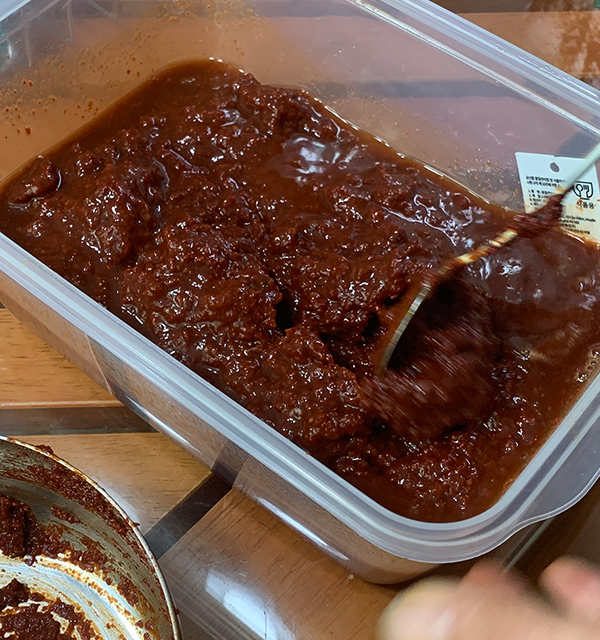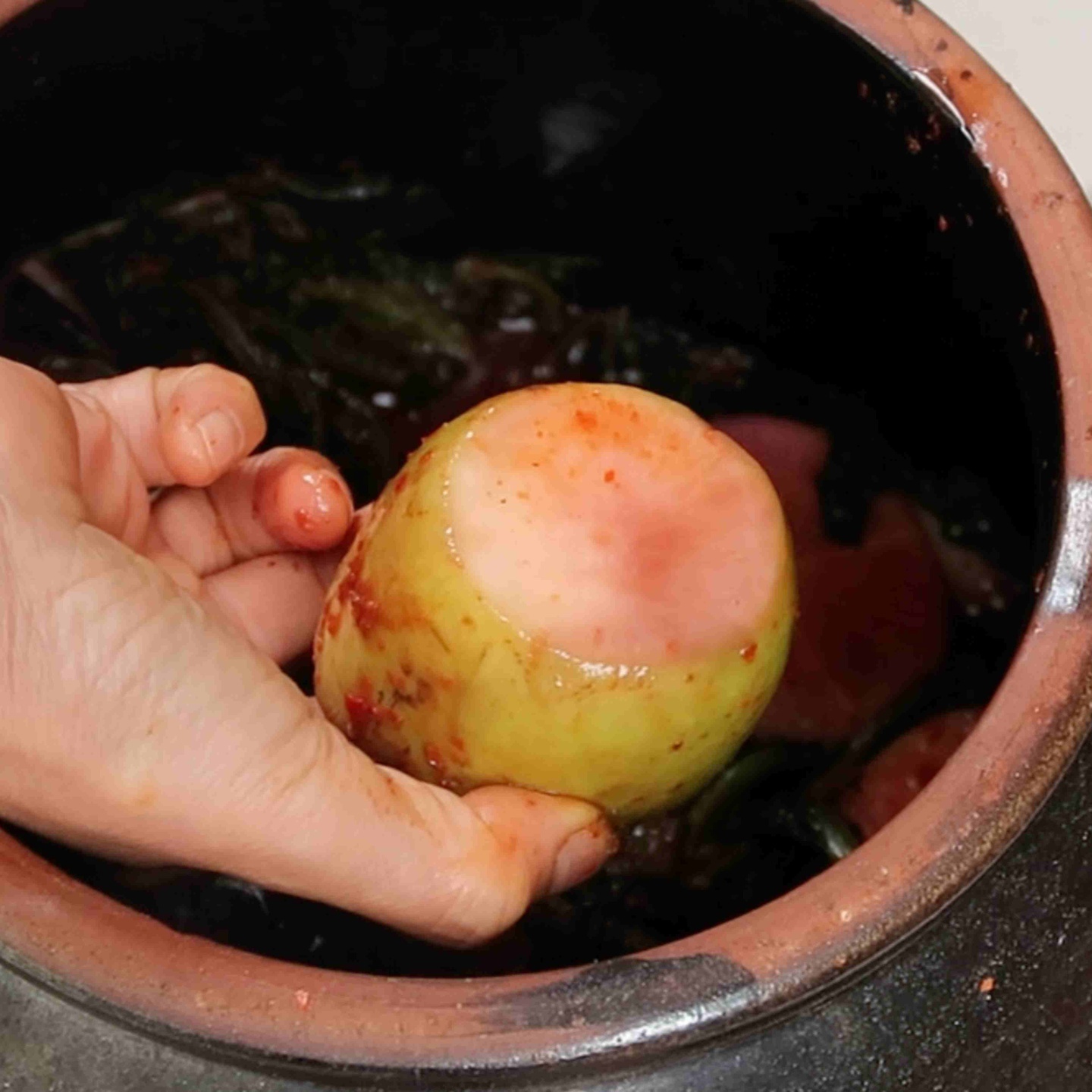The third way that kimchi varies is based on how that particular kimchi is prepared. It can vary based on how it is cut, brined, and or seasoned.
How is it cut:
Kimchi can be called different things based on how it is cut before it is seasoned.
The same exact recipe for cabbage kimchi can be called different things based on if the cabbage was cut into squares before it was brined or if it was left whole before it was brined.
This can all be a little confusing to those who are new to making kimchi and may feel overwhelmed by all the terms and names.
The categorization and names of kimchi can vary so much based on little changes like if the cabbage was sliced into pieces or if they are used whole. So don’t get too confused or hung up on the names or differences.
Different brines for kimchi:
Besides how the vegetable is cut, another preparation that can vary among different kinds of kimchi is how it is brined. Vegetables can be brined differently depending on if they are fermented or not.
So, what is brining? In the simplest terms, brining your cabbage means to add salt to your cabbage and letting it sit. We brine cabbage for various reasons both scientific and for flavor and I will cover exactly why in a different post.
But for now, I will break down two main ways to brine your ingredient: using a salt water brine and a salt brine.
Keep in mind that as you go through my blog you will see that I focus on how red cabbage kimchi is made and so I will share how to do a salt water bring step by step in a different post.
So first let’s breakdown a salt water brine.
A saltwater brine consists of vegetables being soaked in a saltwater mixture for a longer period of time. How long a vegetable is soaked in a brine varies, in some cases vegetables can be brined for as long as 24 hours. After soaking in the salt water, the vegetables are then washed to remove the excess salt before being seasoned. This brine method is used for vegetables that will be made into kimchi that is going to be stored for a longer period of time.
The second brine is a salt brine.
A salt brine consists of vegetables being tossed in coarse salt and left to sit for a shorter amount of time. This salt releases water from the vegetable and is usually not washed off the vegetables, instead, the vegetables are strained from the liquid that was released and seasoned.
This brine is used for vegetables that are usually eaten within a shorter time frame.
Again, these brining timelines and methods used can vary based on the vegetable used and recipe.


